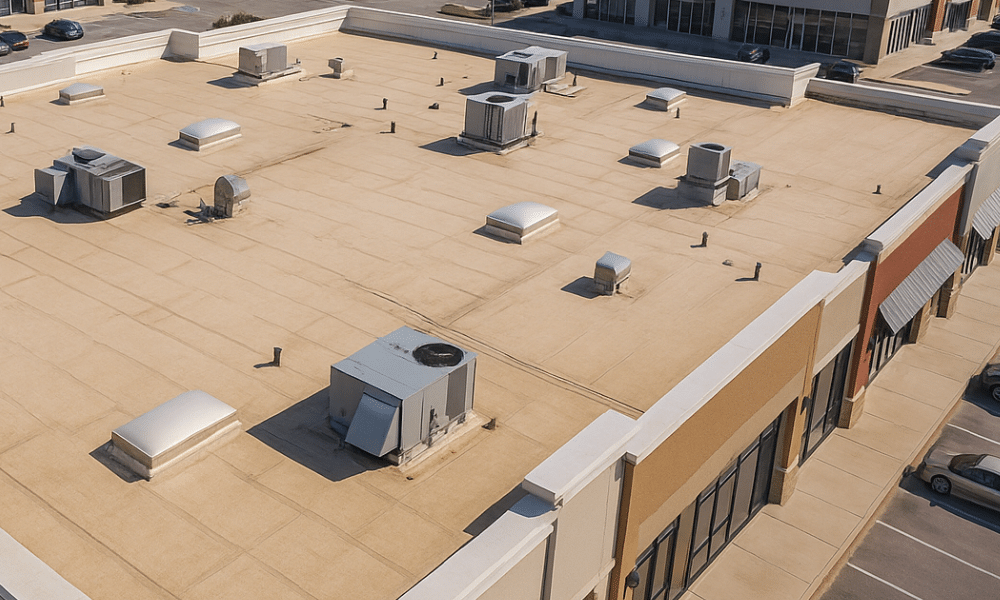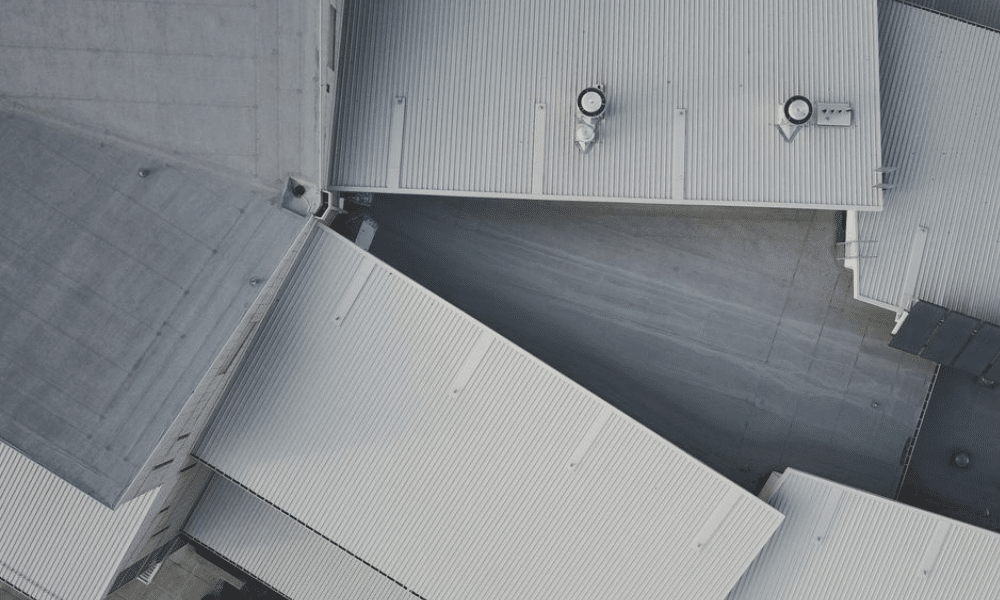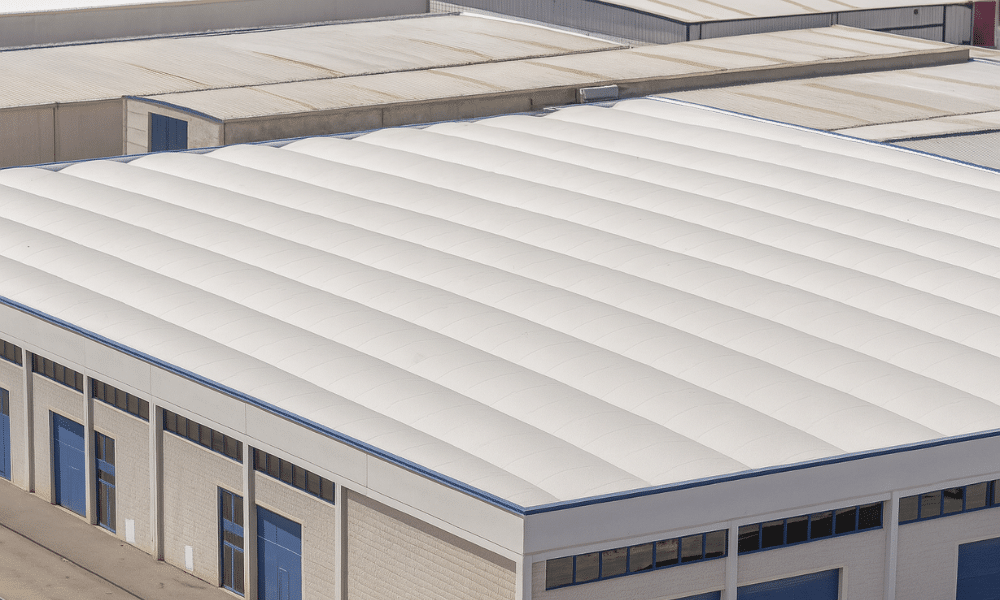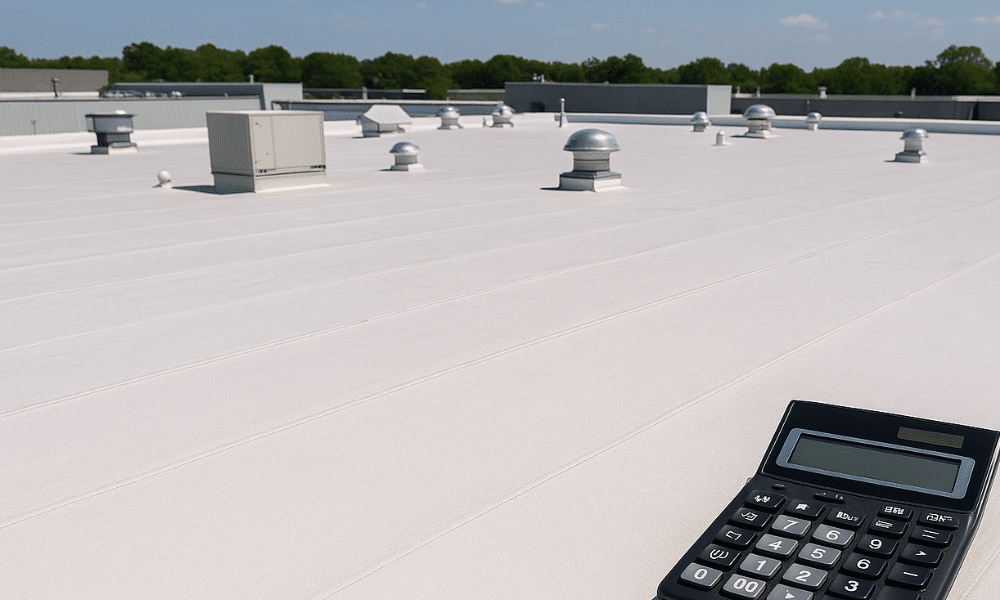
Summary Highlights:
- Roof restoration is ideal for extending roof life without full replacement costs.
- Re-covering involves adding a new layer over an existing system and is code-restricted.
- Both options vary in cost, warranty, and long-term performance.
- WaterTight Roofing helps property owners make smart roofing investments based on condition, budget, and code compliance.
Which Roofing Option Saves More Over Time?
When your commercial roof starts showing signs of wear—ponding water, visible cracks, UV degradation—you're left with a decision: should you restore the system or apply a re-cover? At WaterTight Roofing, we walk commercial property owners through this decision all the time.
Both restoration and re-covering aim to extend your roof's life without a full tear-off, but the costs, benefits, and building code implications vary significantly. The better investment often depends on your existing system's condition, warranty goals, and whether your building qualifies for either option.
What Is Commercial Roof Restoration?
Our comprehensive commercial roof restoration service is one of the most cost-effective ways to extend the life of your existing system without a complete tear-off. At WaterTight Roofing, we provide restoration solutions that involve cleaning the existing surface, repairing minor defects, and applying high-performance protective coatings designed to seal, waterproof, and reflect damaging UV rays.
We frequently recommend restoration for buildings with TPO, PVC, EPDM, modified bitumen, or aging metal roofing systems. It's especially beneficial for property owners looking to preserve their investment without the disruption of full replacement.
- Your roof is in fair condition with no saturated insulation
- You want to boost reflectivity and energy efficiency
- You need to avoid disruptive tear-offs or structural weight concerns
- Your goal is to extend roof life 10–15 years at a lower cost
We use industry-leading silicone and acrylic coatings that cure into seamless, watertight barriers. These systems are ENERGY STAR® rated, highly reflective, and can reduce HVAC strain—especially valuable for facilities in Texas' intense heat.
What Is a Commercial Roof Re-Cover?
Re-covering means installing a new roofing membrane directly over your existing roof, typically when the original membrane is near failure but still structurally sound. This option is allowed only once under most building codes (IBC), and only if the roof doesn't have saturated insulation or two or more existing layers.
At WaterTight Roofing, we perform re-covers using TPO, PVC, EPDM, or modified bitumen—adhered or mechanically fastened—based on your existing substrate.
Re-covering makes sense when:
- The roof has widespread membrane failure but dry insulation
- A second layer is still permissible by code
- You want a system with a full manufacturer's warranty
- Your budget allows for a higher initial investment than coating
Re-covers typically offer 15–30 years of lifespan, depending on materials and installation quality. They add weight to the roof assembly, so structural analysis is always required.
Which Option Delivers the Better ROI?
That's the million-dollar question—and the answer depends on several key factors:
Condition of Existing Roof: Restoration requires a dry, mostly intact substrate. If insulation is saturated or the decking is damaged, re-covering or full replacement may be the only safe options.
Building Code Compliance: Most jurisdictions, including those in Texas, limit the number of allowable roof layers. If your building already has two roofing systems, re-covering may be off the table entirely.
Budget and Timeline: Restoration is more affordable upfront, with faster installation and minimal disruption. Re-covering carries higher material and labor costs but delivers longer-term protection and manufacturer-backed warranties.
Energy Efficiency Goals: Energy-efficient roofing can benefit businesses significantly, and both options offer potential savings. Roof coatings offer excellent reflectivity and help qualify for LEED credits and energy rebates. Re-covers provide less reflectivity unless high-performance membranes are used.
Insurance and Risk: Restoration is often seen as maintenance and not always covered by insurance. Re-covers can be eligible for insurance claims when tied to storm or hail damage—something we help evaluate at WaterTight Roofing.
How Does WaterTight Roofing Help You Decide?
At WaterTight Roofing, we never offer one-size-fits-all solutions. We begin with a detailed roof inspection—using moisture scans, infrared imaging, and core sampling to determine the roof's health.
Then, we present a side-by-side comparison of your options:
- Restoration plan with material specs, lifespan, and cost
- Re-cover plan with installation approach and code analysis
- Full replacement estimate, if applicable
Our team also provides insurance evaluation reports if storm damage has contributed to your roof's failure. We help you navigate the claims process and get maximum value from your policy—whether it leads to a restoration or full system upgrade.
What Are the Long-Term Benefits of Choosing the Right Option?
Making the right decision between roof restoration and re-covering can save you tens of thousands of dollars over time. Restoration helps preserve your roof while meeting short-term operational goals. Re-covering delivers more long-term performance and is sometimes the last option before replacement.
Either way, investing wisely now can prevent emergency repairs, water damage, energy loss, and liability concerns in the future.
Let's Choose the Right Investment for Your Roof
Whether you're weighing roof restoration or considering a re-cover for your commercial property, WaterTight Roofing is here to guide the process. With over 20 million square feet of commercial roofing experience, we know how to evaluate your system and recommend the path that delivers the best return.
Call us today to schedule your commercial roof evaluation. Let's protect your investment, reduce operational risks, and keep your building secure—without overspending.
FAQs About Commercial Roof Restoration
Blog subscribers get new resources and how-to guides delivered via email.
Your Business Relies On Staying Dry





